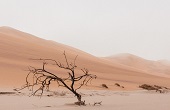|
I use Gaia GPS and Alltrails
|
|
|
|

|
| # ? May 24, 2024 14:46 |
|
I use US Topo Maps on android. Edit: With the paid version you can save large areas for offline use. I do that whenever I'll be in poor coverage area on a climbing or hiking trip.
|
|
|
|
Just got home from a week doing Yosemite and Death Valley. God drat is Death Valley fuckin cool.
|
|
|
|
M. Night Skymall posted:I had a bit of an incident last weekend, and several of the people who helped me had some app they were using to track their path in/out, which I thought might be pretty useful. Are there any apps people recommend for gps trail tracking that include topos and maybe trails, although I'm mostly on climbing trails which can be poorly marked and maintained and maybe not in a general trail database. I have an Android phone and I don't care if it costs money within reason, but I'd prefer not to get a separate device and just use my phone. I had an app(Mountain Project) with a kind of lovely topo that would mark my current location/direction, but I felt like there was a lot of room for improvement. Gaia is the way to go. I think you might need to pay $20 for the app with full features but it's great and almost certainly what those people were using, it's super popular. It should come with all the trails marked on USGS maps but if you have a gpx file of the route you want to take that's off-trail, you can load that into it and follow that. It works great, just need to track your phone's battery life.
|
|
|
|
I work backcountry in the western us and AK. Usually carrying 10-20 lbs of survey grade gps on me and I still use the poo poo out of Gaia GPS. I do pay for a Pro subscription but it's fine out of the box with the paid app-only, no sub. It was also one of the few apps that would work in UTM coords, so I could integrate it into my work (see same coords on both gps units), but that's pretty niche.
|
|
|
|
Adding to the Gaia recommendations. It does require an annual subscription to access maps offline, but we decided it was worth it. The previously mentioned free option of caltopo.com + Avenza does work very well. Downside is that you can only download a few small areas at a time (eg a few day hikes). We used it for years, and still do it as a backup. But I like having my entire region offline in case we go exploring or forget to grab the caltopo.
|
|
|
|
I'm gonna be half a jerk, which means I'm gonna skip the really jerky comment and go straight to the technical part... An app isn't going to help much. GPS doesn't provide that level of accuracy, so you're still gonna find yourself on the side of ridges with invisible, snow-covered trails, wet socks, no gloves, and one headlamp for four people. You can get the same detail and outcome from the official USGS topographic maps, which are free online. I'd recommend you start with a paper map, a compass, and a navigation course. Afterwards you'll be in a better spot to know when apps are lying to you (often). ps Fun times at Snoqualmie Pass this weekend. Lots of highway closures, several feet of snow, tree bombs, breaking trail most of the way, four feet deep in places, slow going, out of shape: 
PhantomOfTheCopier fucked around with this message at 01:10 on Jan 13, 2020 |
|
|
|
That's why I suggested caltopo. Print that poo poo out and also have it on your phone. Learn how to read topo maps and navigate with a piece of paper and a compass.
|
|
|
|
edit: wrong thread.
|
|
|
|
xzzy posted:That's why I suggested caltopo. Print that poo poo out and also have it on your phone. Learn how to read topo maps and navigate with a piece of paper and a compass. I really want and need to take a navigation course. I also think astronavigation would be rad as hell to study. I used to teach aviation instrument nav and dead reckoning so I have somewhat kind of a base to build on.
|
|
|
|
The basics are pretty trivial, you can brush up in 15 minutes with a google search. Obviously in practice it's harder if you're starting to get nervous and it's dense forests in every direction. But as long as you can see landmarks it's fun and enjoyable! 
|
|
|
|
PhantomOfTheCopier posted:I'm gonna be half a jerk, which means I'm gonna skip the really jerky comment and go straight to the technical part... I agree that navigation skills are important and trump everything, but GPS is usually plenty accurate for when you're lost (unless you have like zero LOS then you should be accurate within 5-15 meters), and Gaia uses topo maps too. The main reason I don't like relying on phone apps is because I usually only get confused in the winter and that's when you run the risk of having the cold kill the battery.
|
|
|
|
I keep passing this same tiny wicker man that looks like me but shucks Iím just happy to be here.
|
|
|
|
PhantomOfTheCopier posted:I'm gonna be half a jerk, which means I'm gonna skip the really jerky comment and go straight to the technical part... Why does anyone out there have no gloves? Why does the group have one headlamp? Why does anyone out there not know how to navigate through off-trail terrain despite GPS error range? Why does anyone not have a plan for protecting their feet? Just don't go out in winter with morons, I don't.
|
|
|
|
I'm not sure how you guys got the impression I got lost, I just wanted an app that would show me the track we took after the fact as I think it would have made writing the trip report easier. Anyway, Gaia GPS looks like exactly what I wanted, thanks for the recommendations.
|
|
|
|
M. Night Skymall posted:I'm not sure how you guys got the impression I got lost, I just wanted an app that would show me the track we took after the fact as I think it would have made writing the trip report easier. Anyway, Gaia GPS looks like exactly what I wanted, thanks for the recommendations. You literally got lost in your "incident," tiger.
|
|
|
|
BRAKE FOR MOOSE posted:You literally got lost in your "incident," tiger. I was there for it though, I didn't get lost. I guess I'm in the wrong thread now since you guys think I was on a hiking trail or something. I lost the "trail" because it had running water from the snow melt and I didn't want to scramble up wet rocks, but I walked more or less as directly to the climb as was possible given the conditions and then climbed it, what about that is lost? Dumb, certainly, but not lost. People who think we should have brought more stuff are totally missing the point, we should have either not brought the other 2 people or turned around as soon as we saw the snow, they didn't have the technical skills or fitness to get out of that valley once we'd descended into it and no amount of gloves and headlamps were going to give them either of those things.
|
|
|
|
I'm not by a grizzled, experienced outdoorsman by any sense of the imagination but it seems a bit odd that you're insisting you were not lost considering your description of the events and then you coming into the thread asking for suggestions for a tool used to navigate.
|
|
|
|
He wasnt lost he just didnt know where he was! As others have mentioned GaiaGPS is great. I also really, really, really like CalTopo when I'm at my computer planning big week long trips. Being able to add your path, campsites and mess with overlays and get elevation maps is fantastic. I cant believe that its free its so great.
|
|
|
|
Thank you for sharing your experience. I hope everyone will stop and ask themselves if they're prepared for their outing, and ready to rescue the seven friends they're planning to take with them. I read your story in the Rock Climbing thread (before posting above) and you sounded like you were trail blazing and confused about the location of the trail hiding under the snow. Bushwhacking up to cliffs, climbing up to bushes and later finding trails on higher ridges, these are fun adventuresome things to do given the right preparation and equipment. It sounded like your group was not ready for that. Couple this with the groups that don't bother to check the weather forecast, or that only carry 500mL of bottled water, slightly deeper snow, or other local conditions, and you've got the making of a news story deriding "hikers stranded". Well I hate it when they sensationalize a bunch of college students with phones and nothing else getting trapped overnight, so please be better prepared and plan ahead during winter.
|
|
|
|
Input on snow/hiking boots please! Need: completely water/snow proof, good traction, ankle support, and comfy! My trusted LOWA pair from 2011 have finally became so worn out that even boot repair stuff canít help. The OP didnít list specific brands
|
|
|
JIZZ DENOUEMENT posted:Input on snow/hiking boots please! I have one set of Solomon 4D GTX I use with gaiters if it's warmish and wet. I snowshoe with these often on nicer days.  The second set are Baffin Selkirks for when it's likely to not be wet and it is very cold. I had these in -40 showshoeing in Minnesota and they were awesome. 
|
|
|
|
|
JIZZ DENOUEMENT posted:Input on snow/hiking boots please! No hiking boot is "completely water/snow proof" but any reasonably waterproof hiking boot with gaiters is as close as you're gonna get. I also have a pair of the Salomon boots Yooper linked and they are reasonably waterproof. I haven't taken them in really snowy conditions but my wife uses their X Alp Mid GTX as a light mountaineering boot and they work fine for her. I have never gotten my feet wet from snow or water when wearing integrated super-gaiter mountaineering boots, but those are very expensive, not comfy, very stiff, and not really designed for hiking. Also they are too warm for most weather conditions. Tall, waterproof, insulated snow boots like the one Yooper linked are very snow proof and much more comfortable and affordable than mountaineering boots, but they are also hot as loving hell if its not really cold outside. If you are looking to replace your Lowas just pick whatever goretex or full grain leather hiking boot fits your particular feet best, apply DWR periodically, and use gaiters if you are really worried about snow/water. Different brands tend to use only the same set of lasts for all their models, so if Lowas fit you well for 9 years I'd say start with them.
|
|
|
|
Morbus posted:Different brands tend to use only the same set of lasts for all their models, so if Lowas fit you well for 9 years I'd say start with them. For "cheaper" boots I've been buying 2 pairs at a time once I find something I know is a fit. I bought 3 pairs of Asolos in 2015, but when I went to replace them this year the new version of that same boot didn't feel right, and it wasn't a broken-in thing. So this year I switched to Oboz for everyday hiking w/o load, and a pair or Lowas (Tibet) for my heavier load boot. OP check those out, and Crispis.
|
|
|
|
Winter in Yosemite was interesting. It was my first time to the park, so I'll have to go back to see it from a different perspective. I guess I had my first "Old man yells at clouds" moment here while watching people hike on the icy granite with just converses and running shoes and wondering wtf they're thinking. Death Valley was cool as gently caress due to the multitude of things you could do and see there. I didn't realize how big the whole park is until actually driving around. I may also be biased because I grew up with the desert and love it. It was a full moon while we were there, so not much stargazing to do. However, walking the Mesquite Sand Dunes under the moonlight was pretty neat. On the way home we drove through Mojave National Preserve and the Kelso Dunes are loving massive. Even from four miles away they dwarfed the Mesquite Dunes at DV. Yosemite  Ranger-led snowshoeing  Hiking up to Nevada Falls on the winter route.  The last mile of switchbacks to the top was like this. Fun times!  Liberty Cap and the moon. Death Valley   Badwater Basin  There was a gigantic puddle with about 1" of water one mile from the Badwater Basin parking lot which made for some cool photos.  Artist's Palette  Ubehebe Crater  Red Cathedral from Golden Canyon
|
|
|
|
Thank you for the recommendations friends. Whatís DWR? I liked my old pair and they seemed basically completely waterproof because Iíd walk through 6Ē+ snow for ~1.5 hours a day and Iíd always stay dry.
|
|
|
|
The Aardvark posted:
I have a story tangential to Kelso Dunes. In May of 2003, the company I was working for was hired by CalTech for something different: the professor wanted to send us out with a bunch of students to image the subsurface layering beneath the Dumont Dunes. They were comparing Dumont and Kelso, and gave me some samples from both that I still have, strangely. The plan was to start work as soon as there was enough light, and finish before noon. The students were going to drive up that morning, leaving at rear end-early in the AM, but my partner and I drove up the night before and camped. Not much moon and it was awesome. We also drank a bit too much, which bit me in the rear end the next day when it hit 110F. This is the view of Dumont.  I remember the GPR unit we had required 2 12v marine batteries. We probably humped 300 lbs of crap up to the top of this particular dune.  Here's my partner carrying a load.  And some students at the top. Sorry for the low-res dig camera shots from 2003. We're setting everything up and the students are playing in the sand. Sliding down on their asses like playground equipment, when I hear what sounds like a B-17 flying over at low altitude. Just a monster low "brrrrr" that you'd recognize from any WW2 movie you saw in a theatre with good sound equipment, or if you went to airshows a lot when you were a kid like me. Partner and I are both looking up thinking something is flying east out of Edwards, and the kids are laughing at us. That was why they were there. The little sand avalanches they were causing were making this chest-rumbling sound you could feel a hundred meters away. Steady frequency and amplitude for longer than you'd think before it attenuated. It was neat. We spent several hours taking seismic measurements and GPR images. It started getting hot and we called it a day before noon. I know the CalTech professor eventually had several grad students do their thesis work there. Video here, shows the kids sliding down. I haven't found a good-quality recording of the sound that really lets you get a feel for just how BIG the noise is. https://www.youtube.com/watch?v=PcT8GGsmRJE
|
|
|
|
They renovated the Kelso depot into a vistor center in 2005 or so, and they have a small exhibit that you can play that noise from. I can only imagine hearing it in person.
|
|
|
|
JIZZ DENOUEMENT posted:Thank you for the recommendations friends. Durable water repellent, it's part of what makes most waterproof boots waterproof and it wears off with time, so if your boots start soaking through then sometimes you can restore some of the waterproofing by reapplying a DWR finish at home. Nikwax is generally the most popular brand https://www.nikwax.com/en-us/products/productdetail.php?productid=261&itemid=-1&fabricid=-1 I second the gaiter recommendation though, especially when in deep snow. Outdoor Research makes the best ones.
|
|
|
|
JIZZ DENOUEMENT posted:Thank you for the recommendations friends. DWR is Durable Water Repellent e: should have refreshed
|
|
|
|
Whoever said the best way to learn outdoor stuff was practice (oh wait I just caught up on the last few pages, that might have been months ago), I agree with them. I've tried to do a bit more hiking lately and found there was a local group taking care of one of the longer trails nearby. I've been to a few sessions and it's usually me, one or two other younger people and a half-dozen retired folks who have been hiking for longer than I've been alive and had a story for practically every bend of the track. Plenty of tips from them, safety in numbers, 4WD carpooling to places I couldn't reach otherwise, scenery variety, and the satisfaction of walking back along the newly-cleared & bermed section at the end of the day. Plus, as someone not all that experienced, a lot of the information in this thread is surprisingly obvious once I was out there, soaked in sweat and struggling over the rough ground, with these old folks speeding past me in actually decent gear and then changing out into nice clean clothes once we got back to the car. Even just little things like that, or the existence of gaiters, etc. Somewhere I've been recently - on Mt Farrell, Tasmania, a long way from the US trails that normally show up here. I didn't get to the top the first time I tried; the second time, starting earlier with a better shirt and waterproof shoes, was a cinch in comparison. 
|
|
|
|
pumped up for school posted:I have a story tangential to Kelso Dunes. In May of 2003, the company I was working for was hired by CalTech for something different: the professor wanted to send us out with a bunch of students to image the subsurface layering beneath the Dumont Dunes. They were comparing Dumont and Kelso, and gave me some samples from both that I still have, strangely. Singing dunes are the best. Iíve had good luck experiencing it at the Eureka Dune in the Eureka Valley in the northern tip of Death Valley National Park. Once you get used to it itís very soothing.
|
|
|
|
So the last time I went backpacking was over 20 years ago when I was in Boy Scouts... and iirc my pack weight for a weekend trip was something like 50lbs which sucked. Looking to get back into backpacking and wanted to start small and just get a pack for 1-2 night trips. First, what size backpack do you recommend for trips that long? Second, any brands or things I should avoid or look for in a backpack?
|
|
|
|
You will always need the basics like sleep system, cooking stuff, tent/shelter, first aid, headlamp, compass/map, etc. I would recommend something between 50 and 60 liters. Its small enough for a weekend trip but big enough you can probably do a week out of it if you pack well. The biggest difference between the stuff you need for 2 days and 5 days (given the same conditions) mostly comes down to quantity of expendables like food and fuel. Fitment is up to you and I would definitely recommend going and trying them on in person and getting fitted by someone who knows what they're doing. I will say for brands, almost everybody I know loves Osprey. Their packs are great and they have an incredible warranty program. I've had a few different bags (mountainsmith, gregory, osprey, mountain hardware) and I like osprey stuff the most. A well fitting pack at 50lbs can feel much more comfortable than an ill fitting 30 lb pack. I live in the pacific northwest and see Osprey bags EVERYWHERE. A good pack is worth the $250 investment. I personally like big U zippers vs top and bottom opening but its not a deal killer. I don't like too many exterior pockets but I realized hip belt pockets are really nice to have. My biggest thing I look for in packs is compression straps. It helps stable the load and make a pack feel much smaller when you're not carrying as much.
|
|
|
|
I'm planing on going fairly light with the tent, sleep system, cooking stuff, and other essentials along with not having too much in the way of luxury items (aiming for a 14lbs base weight) so my thoughts were to get a 45-48L pack to start with and then if longer trips become a thing get a 58-70L for those, that way I'll have dedicated packs for shorter and longer trips instead of trying to get an all in one and have to cinch the hell out of the larger one to start off. I've tried a few on in REI last weekend and liked the following. Osprey Exos 48 Osprey Rook 50 Gregory Optic 48 All of those fit well and I liked the suspended mesh back feature since I have that on my day pack I use for the 10-15 mile hikes I've been doing. My concern with the Optic 48 (which I liked the best since it had the best price/weight/features ratio) is the 30lbs recommended weight limit while the other two are 40. Is over 16 lbs of food/fuel/water excessive for no more than 2 night trips or does that seem like a lot?
|
|
|
|
Gringostar posted:I'm planing on going fairly light with the tent, sleep system, cooking stuff, and other essentials along with not having too much in the way of luxury items (aiming for a 14lbs base weight) so my thoughts were to get a 45-48L pack to start with and then if longer trips become a thing get a 58-70L for those, that way I'll have dedicated packs for shorter and longer trips instead of trying to get an all in one and have to cinch the hell out of the larger one to start off. It all depends on the conditions, the difficulty/mileage of the hike, available water sources etc, and you. I try to carry a 3L reservoir of water in my pack. For food, 2lbs per person per day is usually a good approximation but it also depends on what you eat and how much you eat.
|
|
|
|
30 pounds is pretty generous for 2 nights. I'm pretty close to that and I lug a bunch of luxurious photography gear. Main exception is if you have to haul all your water.
|
|
|
|
Let me know how you finally select. I'm looking for something a bit bigger than my osprey 35 but not much. Mostly because I carry a lot more water than most folks I know. I've been eyeballing the new small Flex Capacitor 25-40. It is probably a shade too small so maybe I'll get the bigger one (40-60) and leave it compressed. My only gripes with it is a little "strappy", where I don't like loose ends, and no external pocket for a rain/snow layer. The new one has a little removable mesh pocket that looks ok but not great. I probably only care about that a couple of months a year so I should probably ignore it
|
|
|
|
Yeah, it's very dependent on your personal preferences, and especially what your water and food needs mom like. I'm usually closer to one pound per day per person, but I'm carrying very calorically dense foods. For reference, I hike with a 30l pack and my girlfriend's is nearly double that. I'd say fifty is a good size for a starter pack, especially if you're going to be hiking either in a desert or cooler temperatures. Even if you later decide that it's too much space for your normal weekend, it can still be useful for situations where you need to carry a little extra.
|
|
|
|

|
| # ? May 24, 2024 14:46 |
|
Some bags also have a capacity extensions, usually +10L or something. So if you aren't sure consider one of those. Buy a little smaller and if you need the room, the cinch at the top will have a little extension you can fold out. I don't think Osprey makes though so it may not help, but I know some brands REI carries does.
|
|
|

































